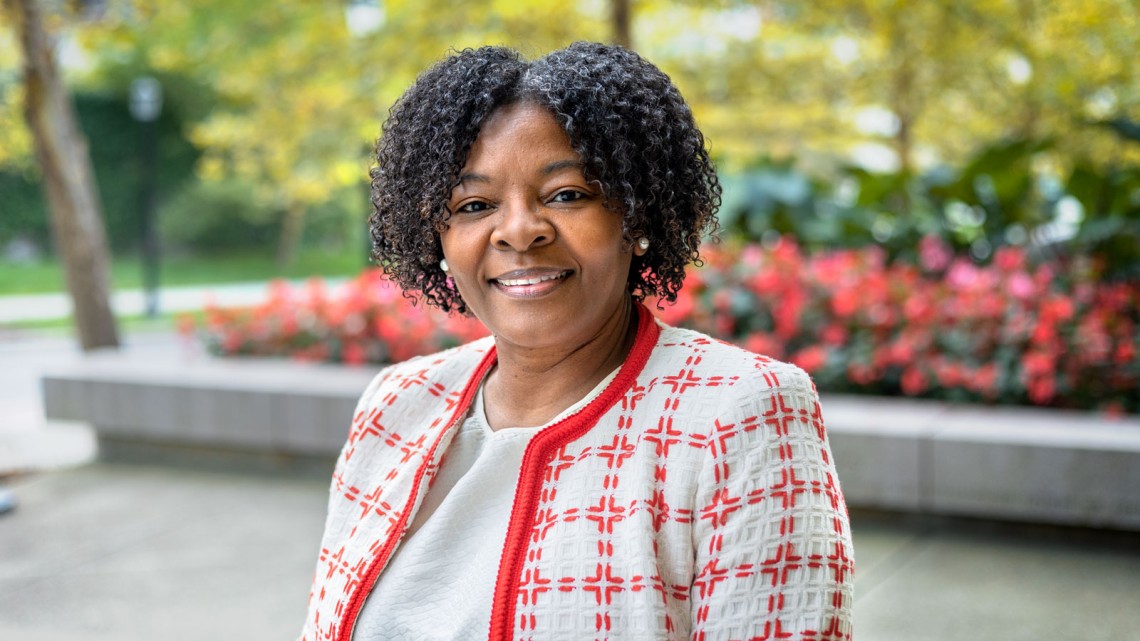
Christine D. Lovely, vice president and chief human resources officer.
Christine Lovely, new HR chief, describes priorities, vision
By Ashley Fazio
Christine D. Lovely, a lawyer-turned-human resources executive, brings extensive experience in higher education and a passion for promoting diversity, equity and inclusion to her new role as Cornell’s vice president and chief human resources officer.
Formerly the associate vice chancellor and chief human resources officer at the University of California, Davis, Lovely succeeds Mary Opperman, who served Cornell for 25 years.
Six weeks into her tenure, Lovely spoke with the Cornell Chronicle about her vision for the role and the challenges and opportunities facing human resources in higher education during a time of change.
Question: What have your priorities been during your first weeks?
Answer: Priority No. 1 has been learning Cornell. I’m coming in like a sponge, and I’m going to soak up a lot of information before I make any recommendations or changes. I need time to hear and listen, and I’ll be transparent about what I hear.
I intend to do impactful work, work that makes a difference in the lives of the workforce. That’s my overarching desire. But I don’t know the specifics of what that means yet.
Q: Can you talk about your thoughts, philosophy and approach to diversity and inclusion?
A: Diversity is a fact of life. But the question is, what do we do as a university, and how does it show up as a priority. It’s important that diversity is one of the lenses through which we view everything that we do in HR, from recruiting to onboarding to transitioning people away from the university. I always try to infuse diversity and inclusion into what we do.
When we talk about diversity, we’re talking about more than race and ethnicity. We all have our uniquenesses and that’s what makes our workplace even better. We need to learn how to respect people that are different from us, appreciate and embrace those differences and allow for people to feel like we have a workplace that allows them to just be.
Q: How can our workplace be more intentional in prioritizing diverse employees; for instance, those with disabilities and chronic health conditions?
A: It’s important that we communicate about resources and encourage people to talk to one another to understand each other’s needs.
At UC Davis, I spent time with our employee resource group around disability. One of the things that came through loud and clear is that sometimes there are unseen disabilities that people aren’t privy to. Disabled staff also shared that in the pandemic, it was easier for some employees to contribute with our flexible work arrangements.
Our disabled employee population is some of the most loyal when it comes to retaining their services at the university. Doing what we can to support them is in our interest as well as theirs.
Q: How did you approach the shift to hybrid and remote work at UC Davis?
A: In a lot of ways, higher ed is very traditional, and we’re not often on the forefront of making changes quickly. So, when we were forced to do that during the pandemic, I put into place a work group at UC Davis to look at how we could structure hybrid and remote work beyond the pandemic with the goal to maximize flexibility where appropriate.
I think that’s key to retaining top talent. I want to put the emphasis on that: It’s top talent that has options at other places. It’s just not a good idea to ignore that fact and insist on going back to February of 2020 and reverting to what we were doing then. If we want to retain and attract the best, we must be able to flex with the times. The market has changed in terms of what it takes to attract and retain employees, and so we have to change with it.
That’s a big part of our role in human resources: to identify strategies that meet the needs of offering an in-person experience for our students while managing the needs that employees have around work-life balance. We must also consider things like community, and diversity, and childcare challenges.
Q: This is a big culture change for higher education. Can you share your observations or experience with successful approaches to moving through culture change?
A: It’s always about identifying for your audience, what’s in it for them. We have to be able to tell the story … of what attracts candidates, what our employees are experiencing when they work here, and what people say in exit surveys when they leave. Data is very useful in informing our strategy and telling those stories.
Ashley Fazio is director of communications for the Division of Human Resources.
Get Cornell news delivered right to your inbox.
Subscribe
